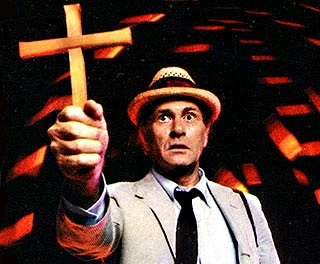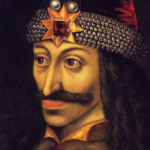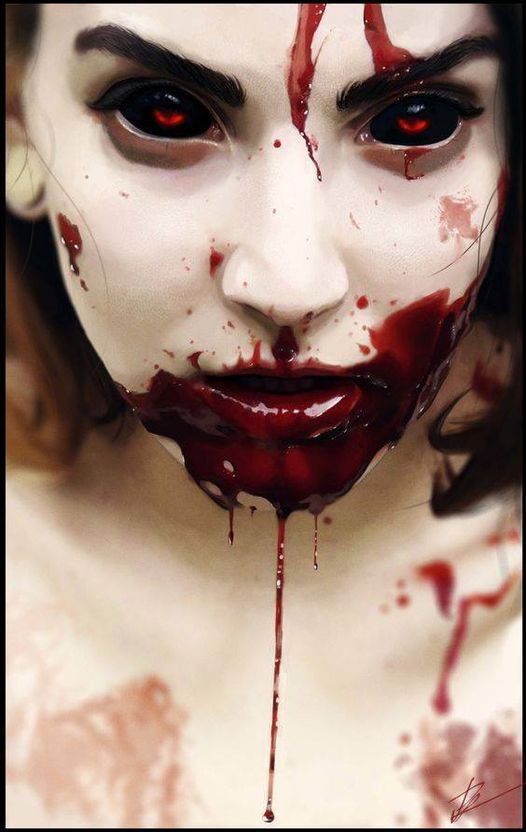
Fortunately for us, vampires have several limitations upon their supernatural powers and existence.
The first was their all-consuming craving for blood.
Unless a vampire drank approximately one quart of fresh blood every other night, it would weaken and either fall comatose or perish.
Some vampires of great power, like Dracula, were able to resist their bloodlust for up to a week before their hunger became unbearable.
Alternatively, they can remain a longer time in their coffins but their physical body will be affected by the lack of blood.
Invitation
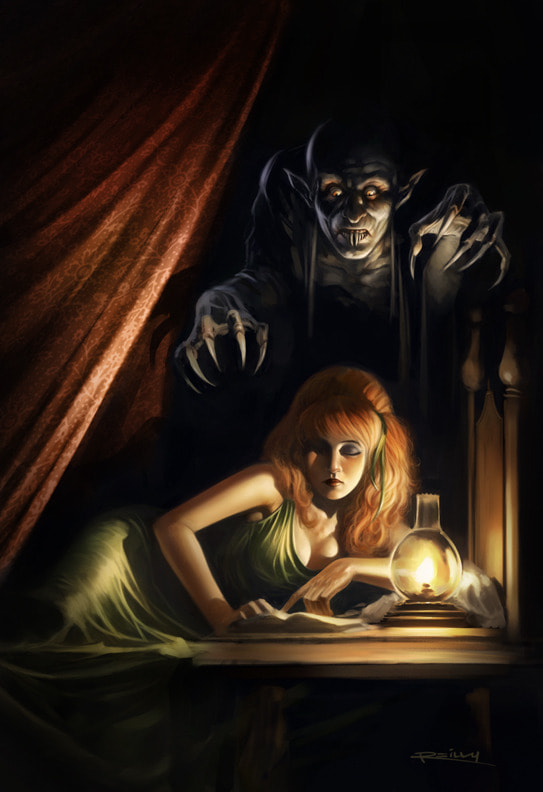
Vampires have a mystical aversion to entering any human dwelling place which they have not been verbally invited.
Once invited, they may enter the place anytime thereafter.
“He may not enter anywhere at first, unless there be some member of the household to bid him to come; though afterwards he can come as he pleases.” – Professor Van Helsing in Mina Harker’s Journal, Chapter XVIII of Dracula by Bram Stoker
Vampires are said to be unable to enter churches, temples, or other religious sanctuaries that represent “light” or goodness, whether they have been previously invited or not.
They may only enter such holy places if they have been somehow desecrated beforehand.
The vampire, as any pagan creature, is not admitted in the holy sanctuaries of the Church but there are no testimonies that he can be harmed if he doesn’t follow the rule.
Water
The vampire may not cross running water, except at the ebb and flow of the tide. He may be carried over or at certain times he may change shape and fly or jump over.
This is not to say that they cannot swim, but running or flowing water such as rivers, streams, or waterfalls mystically impede the creature’s ability to swim and stay afloat, causing it to drown and perish.
This is but a temporal “death”, however. Once a vampire’s body is removed from running water, it will return to “life”.
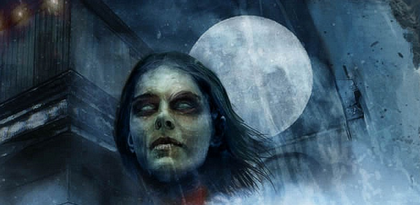
“It is said, too, that he can only pass running water at the slack or the flood of tide.” – Professor Van Helsing in Mina Harker’s Journal, Chapter XVIII of Dracula by Bram Stoker
“The Count, even if he takes the form of a bat, cannot cross the running water of his own volition, and so he cannot leave the ship.” – Professor Van Helsing in Jonathan Harker’s Journal, Chapter XXV of Dracula by Bram Stoker
It is not known how Stoker arrived at this notion. Perhaps he invented it. But there are precedents for this in folk beliefs.
On some of the Greek islands, including Hydra, Kythnos and Mitylene there was occasionally found the practice of re-burying the corpse of an alleged vampire on a desert island in belief that the vampire could not cross the water to another shore.
In his book The Customs and Lore of Modern Greece (first published in 1892, reprinted in 1968 by Argonaut, Inc.), Rennell Rodd wrote:
“Hydra is said to have been formerly infected by vampires, but a zealous bishop transferred them to the unoccupied island of Therasia, in the Santorin group, where they still walk at night, but being unable to cross salt water, find no one to torment.”
One case of this practice on the island of Kythnos recorded by Henry Hautteweur in his Le Folklore de l’Isle de Kythnos (Brussels, 1898) is translated on pages 268-70 of The Vampire in Europe by Montague Summers, first published in 1928.
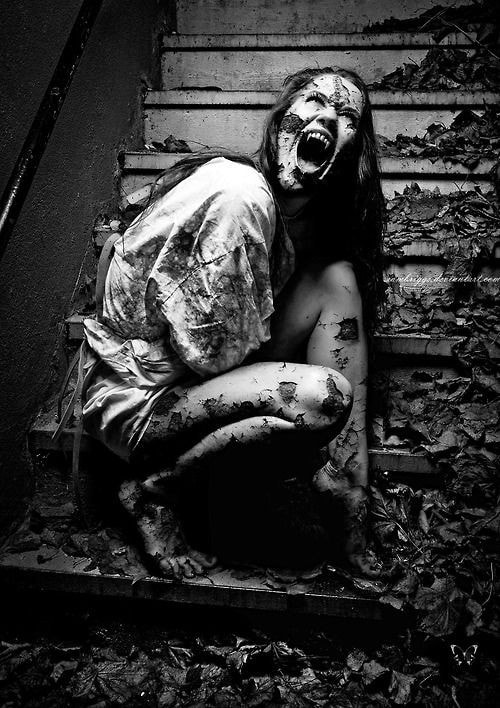
Here the vampire broukolakas is a dead man named Andilaveris who terrorized his village every night but Friday, the only time when he must rest in the grave. Finally the village priest, the night watchmen of the cemetery and Church, and some other people exhumed the corpse on a Friday night, put it in a burlap sack, and transported it by barque to the tiny, unihabited island of Daskaleio. But, at some point on this journey, apparently after they reached the islet, the vampire revived from his slumber and attacked the priest by throwing mud and excrement. But somehow they managed in the end to bury him at a remote spot on the desert island.
Montague Summers gives another example in his earlier book, The Vampire: His Kith and Kin, first published in 1927. This one is taken from Travels and Discoveries in the Levant, Volume I, p. 213, by Newton (London, 1866). Summers wrote, as one complete paragraph, the following:
“Newton….says that in Mitylene the bodies of those who will not lie quiet in their gravcs are transported to a small adjacent island, a mere eyeot without inhabitants were they are re-interred. This is an effectual bar to any future molestation for the vampire cannot cross salt water. Running water he too can only pass at the slack or flood of the tide.”
Cases of vampires unable to pursue someone any longer after the latter crossed running water are also found in Chinese tales.
This general belief is also applied to other monstrous creatures like fairies.
“If chased by evil fairies, one could generally escape by leaping to safety across running water, particularly a southward flowing stream.” – Katherine Briggs – An Encyclopedia of Fairies (Pantheon Books, 1976), p. 336
Sunlight
Most vampires fall into a semi-conscious, trance-like state during the daylight hours that keeps them aware of things happening around it.
The vampire may only leave its resting place at sunrise, noon or sunset.
This is clearly the vampire’s time of greatest vulnerability since it is helpless when resting within its coffin.
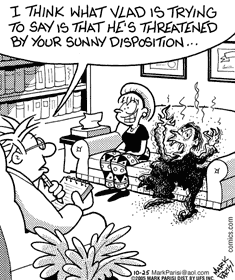
During the daylight hours, the vampire’s powers are considerably weakened; although it should be pointed out they are still dangerous and certainly powerful enough to wipe out reckless vampire hunters.
Older and more powerful vampires do not require such rest; they only need to avoid direct sunlight.
Probably another Stocker’s exaggeration as vampires were known to hide during the day but no description was given about what they were supposed to do during that time.
In modern films, vampires are unable to withstand the direct rays of the sun. Direct exposure causes a vampire to completely dehydrate and burst into flames or crumble into dust within minutes.
According to theories based on the vampire’s altered metabolism, sunlight causes the ichor to congeal in the vampire’s veins and the skin to decay rapidly.
This feature is omnipresent in modern Hollywood movies but does not seem to have any legendary or historical background.
In some recent movies, the experienced vampire is able to move and act as a human during daytime. Nevertheless, he loses his supernatural abilities and mortal weapons may harm him.
Human Living Vampires also claim to have a severe sensitivity to sunlight as well as certain forms of artificial light. Through some diseases cause photo sensitivity, the present aversion to light is probably a consequence of a nocturnal life and self-induced stigma.
Soil
Vampires are said to be also limited by their supernatural dependence upon the soil of the land of their birth.
They are obliged to sleep during the day and to rest upon a protective layer of hallowed ground from its native land.
They cannot travel more than 100 miles from the place they were born, unless they have taken along at least a pound of their native soil with which to line their coffin or sleeping area.
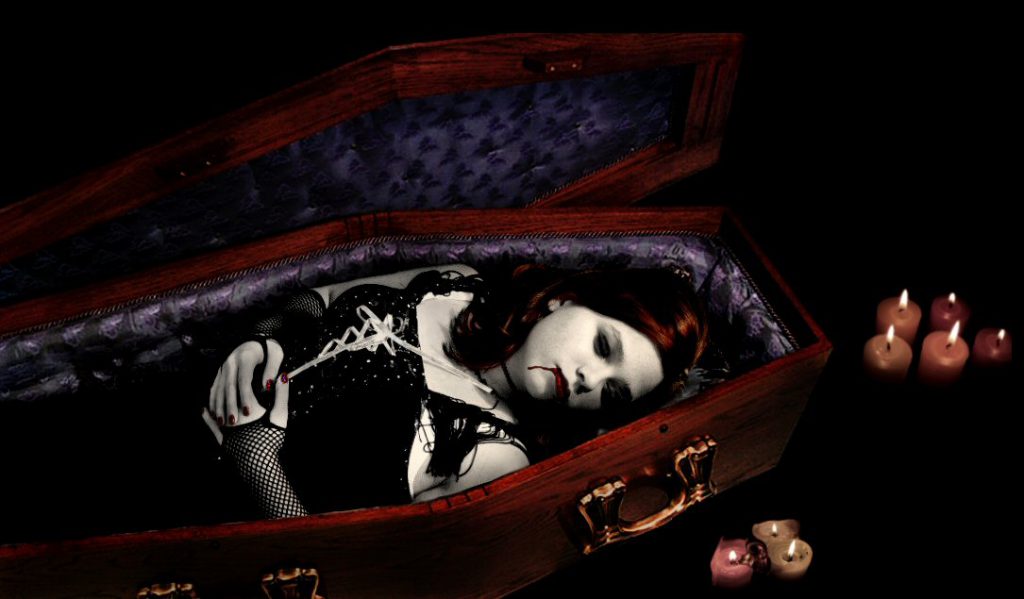
A vampire cannot rest within its coffin or resting-place unless it is in direct contact with their native soil.
Placing a crucifix (or some other religious object) or holy wafer within the confines of a vampire’s coffin or resting -place will defile both the soil and the vampire’s place of rest, thereby causing it to be unsuitable and inaccessible for the vampire.
To be less vulnerable, many vampires usually have more than one resting-place in case they are discovered.
Again, there is no tradition in myths and folklore that support this allegation.
Mirrors
Vampires don’t reflect in mirrors. In some areas, they are also believed not to show in photographs or to cast shadows.
There are several instance son that in Stoker’s Dracula:
“He throws no shadow; he make in the mirror no reflect, as again Jonathan Harker observed.”
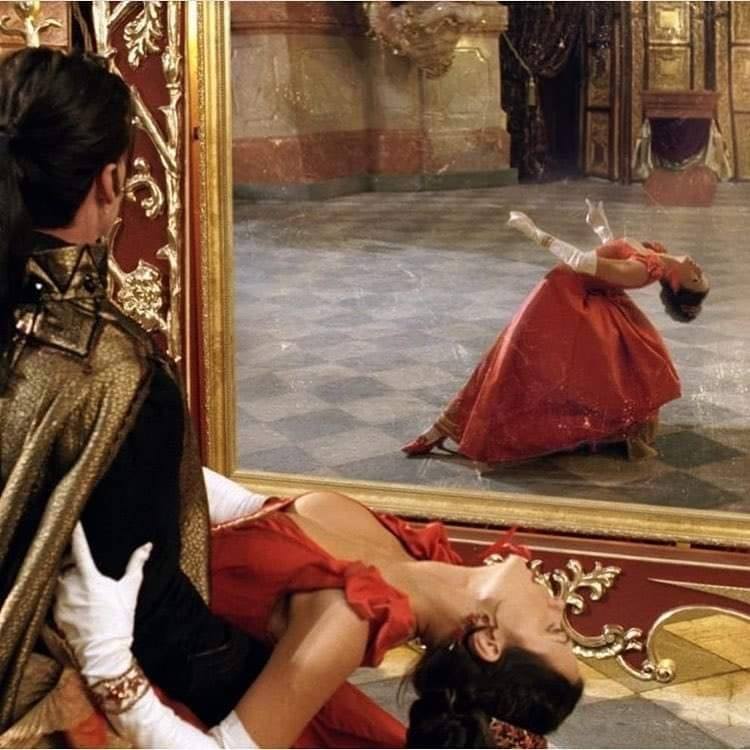
Professor Van Helsing in Mina Harker’s Journal, Chapter XVIII of Dracula by Bram Stoker
All over Europe, there was a taboo that all mirrors that are in the same room with a corpse should be draped otherwise the spirit of the dead person might become trapped in the mirror or the living unfortunate person whose body is reflected with the body of the dead, would die soon after the dead person was buried.
A reason given for this is the old idea that the image of a person in a mirror is the soul of the person; since vampires have lost their souls they cast no reflection.
Garlic and religious symbols
Vampires have a mystical aversion to garlic plants. The wearing of at least one clove around one’s neck was sufficient to ward off a vampire.
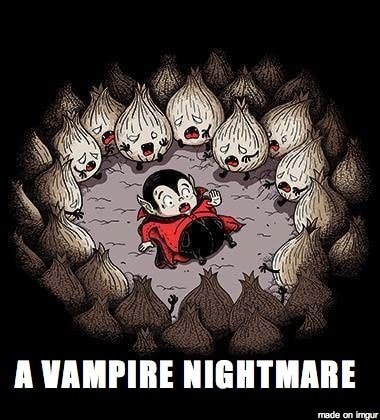
Furthermore, a vampire could not use his or her shapeshifting abilities while within about twenty feet of a garlic clove.
Vampires also had an aversion to any religious symbol (such as a crucifix, cross, Star of David, or holy water) wielded or placed by anyone who believes in the religious significance of the symbol.
